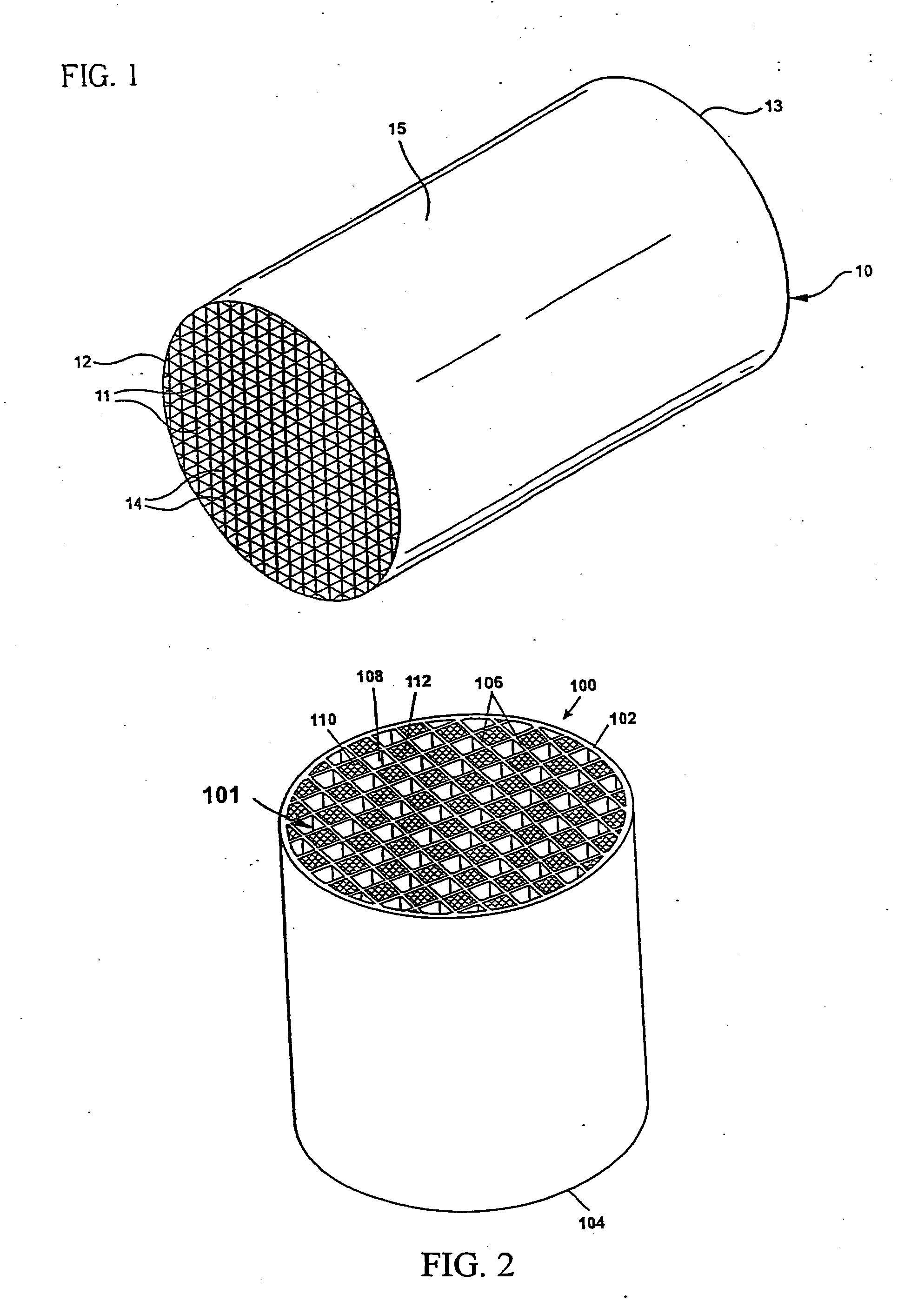Controlled pore size distribution porous ceramic honeycomb filter, honeycomb green body, batch mixture and manufacturing method therefor
a porous ceramic and filter technology, applied in the direction of metal/metal-oxide/metal-hydroxide catalysts, machines/engines, chemical/physical processes, etc., can solve the problems of low efficiency, high cost of sic, so as to reduce the pressure drop of wash-coated, reduce the risk of clogging of small pores, and reduce the effect of clogging
- Summary
- Abstract
- Description
- Claims
- Application Information
AI Technical Summary
Benefits of technology
Problems solved by technology
Method used
Image
Examples
examples
[0064] As shown in FIG. 1, inventive examples of cordierite green bodies 10 were prepared by weighing out the dry ingredients including various examples of the inventive pore formers listed in Table 2 and forming aids such as a cellulosic material, for example methyl cellulose, and sodium stearate. The dry ingredients are then mixed with a solvent vehicle, such as with water, and kneaded in a preferably stainless steel muller to form an extrudable plastic mass. The plastic mass is then formed, preferably extruded, into a green body, as described in U.S. Pat. No. 5,205,991, for example. Upon being extruded, the cellular honeycomb green bodies are cut to a log length.
[0065] The extruded green body 10 includes a honeycomb structure having a plurality of generally parallel cell channels 11 formed, at least partially defined by intersecting cell walls 14 (otherwise referred to as “webs”) that extend from a first end 12 to a second end 13. Preferably, the green body 10 also includes an e...
PUM
| Property | Measurement | Unit |
|---|---|---|
| porosity | aaaaa | aaaaa |
| pore size | aaaaa | aaaaa |
| porosity | aaaaa | aaaaa |
Abstract
Description
Claims
Application Information
 Login to View More
Login to View More - R&D
- Intellectual Property
- Life Sciences
- Materials
- Tech Scout
- Unparalleled Data Quality
- Higher Quality Content
- 60% Fewer Hallucinations
Browse by: Latest US Patents, China's latest patents, Technical Efficacy Thesaurus, Application Domain, Technology Topic, Popular Technical Reports.
© 2025 PatSnap. All rights reserved.Legal|Privacy policy|Modern Slavery Act Transparency Statement|Sitemap|About US| Contact US: help@patsnap.com



